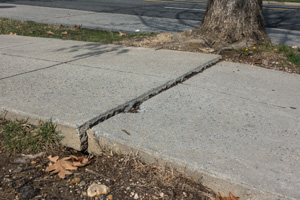Causes of Common Area Walkway Accidents in an Apartment Complex
Posted in Apartment Accidents on September 19, 2024
As residents of an apartment complex, we often use the common area walkways to access our homes, the parking lot, or other amenities. However, what many of us may not realize is that these seemingly harmless walkways can be the site of frequent accidents. From slips and falls to more serious incidents, walkway accidents in apartment complexes can cause serious injuries and even lawsuits.
At Soofer Law Group, we have represented numerous clients who have suffered from these types of accidents. Our apartment injury lawyers are well-versed in identifying the key causes of such incidents and helping victims seek the justice they deserve.
What Environmental Factors Contribute to Walkway Accidents?
Several environmental factors can turn a simple walk on apartment complex pathways into a hazardous journey. Some factors that can cause these accidents include:
- Poor lighting: Dim or absent lighting can obscure vision, making it difficult to spot potential hazards on the path ahead.
- Wet or slippery surfaces: Water, ice, or spilled substances can significantly reduce traction, increasing the risk of slips and falls.
- Weather conditions: Rain, snow, and ice can transform walkways into treacherous paths without proper upkeep.
- Obstruction and debris: Leaves, branches, or discarded items can cause individuals to trip or lose their balance unexpectedly.
If you were injured on an apartment walkway due to these or any other factors, you may have grounds for a premises liability claim. Consulting with a knowledgeable attorney can help determine if negligence on the part of the property owner or manager contributed to your accident.
How Do Design Flaws Affect Walkway Safety?
Design flaws within an apartment complex’s walkways can greatly impact the safety and well-being of its residents. Inadequate design can lead to poor water drainage, resulting in puddles or ice patches that pose slip hazards.
Uneven surfaces or unexpected steps that are not clearly marked can also increase the risk of trips and falls. These design oversights not only endanger residents but can also reflect negligence on the part of the property owners or managers, emphasizing the importance of thoughtful, safe walkway design in preventing accidents.
What Role Does Maintenance Play in Walkway Safety?
Maintenance is pivotal in ensuring the safety of walkways within an apartment complex. Failing to promptly address known hazards, such as loose tiles or damaged pavement, can result in avoidable accidents. Furthermore, regular maintenance checks are crucial for early detection and rectification of potential hazards, ensuring that all walkways are in good condition and safe for use.
Additionally, when hazards are present, the lack of adequate warning signs can leave residents unaware of potential risks, increasing the likelihood of accidents. Proper maintenance practices, including timely repairs, routine inspections, and clear signage, are essential components in preventing walkway accidents.
How Soofer Law Group Can Help Protect Your Rights
At Soofer Law Group, we understand the serious impact that walkway accidents in apartment complexes can have on your life. Our dedicated team is experienced in handling these specific types of personal injury cases and is committed to helping you navigate the legal process. We take pride in our proactive approach, ensuring that every detail of your case is meticulously examined to build a strong claim on your behalf.
With a proven track record of securing significant settlements for our clients, we are prepared to fight for the compensation you deserve. Whether negotiating with insurance companies or representing you in court, our goal is to achieve the best possible outcome for you. If you’ve been injured due to unsafe walkways, contact us today at (310) 861-4058 or through our contact form to discuss your case.

